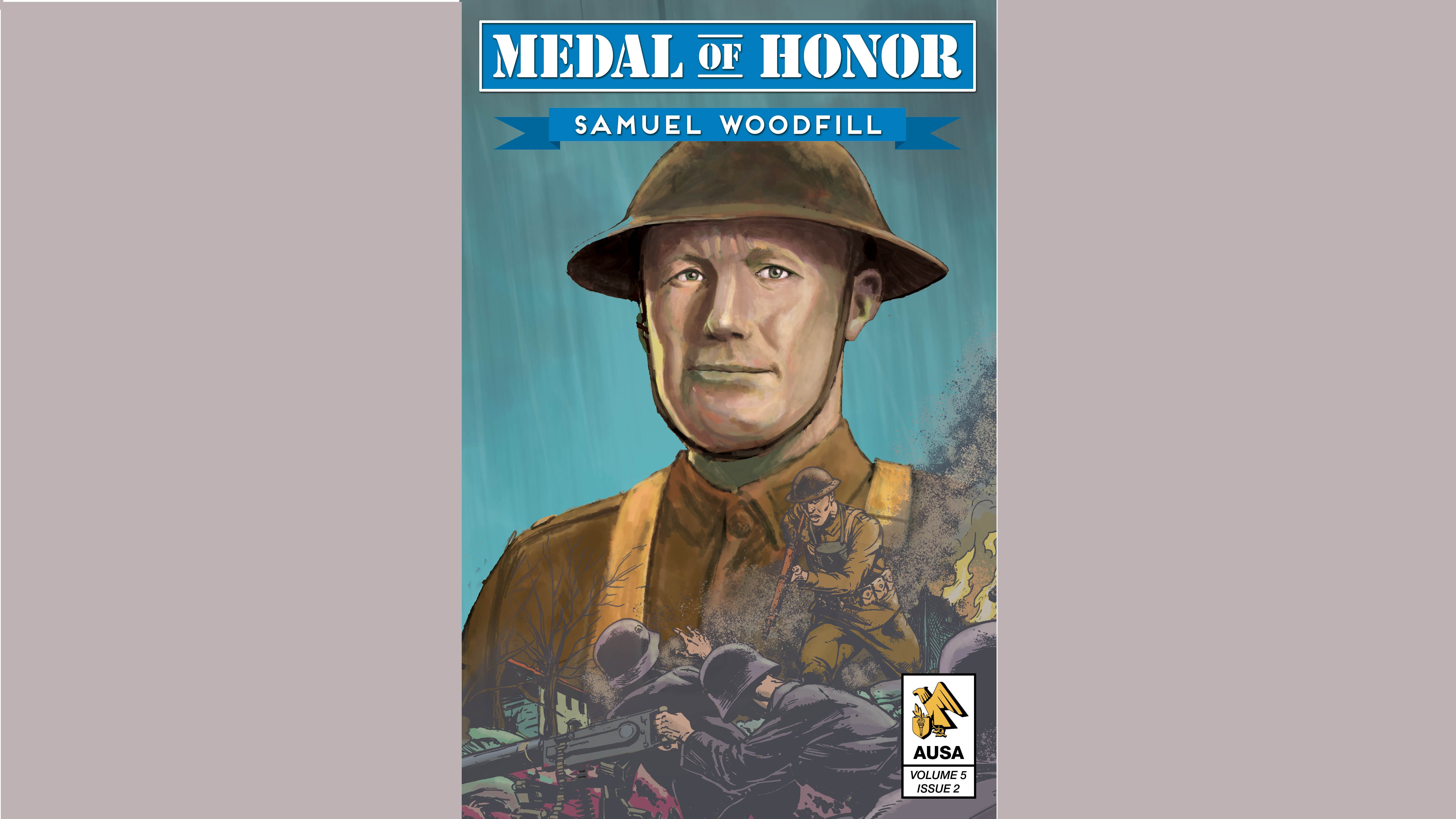Graphic Novel Features WWI’s ‘Greatest Single Hero’
Graphic Novel Features WWI’s ‘Greatest Single Hero’

Maj. Samuel Woodfill, who single-handedly took out several machine-gun nests with a rifle, a pistol and a pickax during the Meuse-Argonne offensive of World War I, is the subject of the latest graphic novel in the Association of the U.S. Army’s series on recipients of the nation’s highest award for valor.
Medal of Honor: Samuel Woodfill tells of the Indiana native’s actions on Oct. 12, 1918, in Cunel, France. Gen. John Pershing, commander of the American Expeditionary Forces, once described Woodfill as “the greatest single hero in the American Forces.” Pershing personally presented Woodfill with the Medal of Honor and later handpicked him to help dedicate the Tomb of the Unknown Soldier at Arlington National Cemetery.
“In the years following World War I, Samuel Woodfill was as famous as Alvin York, but today he has largely been forgotten,” said Joseph Craig, director of AUSA’s Book Program. “I’m privileged to work with such a great creative team to help restore the spotlight on this remarkable soldier.”
Medal of Honor: Samuel Woodfill is available here.
AUSA launched its Medal of Honor graphic novel series in October 2018. This is the 18th novel in the series, with two more planned this year along with a paperback collection to be released in the fall.
The digital graphic novels are available here.
Born in January 1883, Woodfill was known for his marksmanship, a skill he honed from boyhood as he watched his father, a Mexican-American War and Civil War veteran, and older brothers hunt.
At 15, Woodfill tried to join the military so he could fight in the Spanish-American War, according to a DoD news release, but he was turned down. He was finally accepted into the Army when he turned 18.
Woodfill served in the Philippines for three years before volunteering for duty in Alaska. There, he further honed his marksmanship skills by hunting large game, according to DoD.
After stints in Kentucky and Texas, Woodfill was sent to France in the fall of 1918, just as the Meuse-Argonne offensive was unfolding, according to DoD.
On Oct. 12, 1918, then-1st Lt. Woodfill was leading his men from Company M, 60th Infantry, 5th Division, just outside the town of Cunel when they came under heavy machine-gun fire. Woodfill moved out ahead of his soldiers toward a machine-gun nest. When he got within 10 yards of the gun, it stopped firing, and four enemy soldiers rushed toward Woodfill, according to his Medal of Honor citation.
Woodfill shot three of them. When the fourth rushed Woodfill, the two struggled in hand-to-hand combat until Woodfill killed the enemy officer with his pistol.
The American soldiers continued their advance until another machine gun opened fire on them. “Calling on his men to follow, 1st Lt. Woodfill rushed ahead of his line in the face of heavy fire from the nest, and when several of the enemy appeared above the nest, he shot them, capturing three other members of the crew and silencing the gun,” according to the award citation.
A few minutes later, Woodfill again charged a machine-gun position, this time killing five enemy with his rifle, according to the citation. “He then drew his revolver and started to jump into the pit, when two other gunners only a few yards away turned their guns on him,” the citation says. “Failing to kill them with his revolver, he grabbed a pick lying nearby and killed both of them.”
Woodfill’s actions enabled his men to push on to their objective, but shrapnel and mustard gas would cut short his fight that day. He would spend 10 weeks in an Army hospital.
On Feb. 9, 1919, Pershing presented Woodfill with the Medal of Honor. Woodfill left the Army and returned home that November, but rejoined just three weeks later, according to DoD. He didn’t mind that he had to start over as a sergeant.
Two years later, in November 1921, Woodfill was among the eight highly decorated World War I veterans chosen by Pershing to escort the first unknown to his final resting place at the Tomb of the Unknown Soldier at Arlington National Cemetery.
Woodfill died Aug. 10, 1951. He was 68. He is buried at Arlington, near Pershing’s grave.
Each AUSA graphic novel is created by a team of professional comic book veterans. The script for the graphic novel on Woodfill was written by Chuck Dixon, whose previous work includes Batman, The Punisher and The ’Nam.
Pencils, inks and the cover were by Geof Isherwood, who has worked on The ’Nam, G.I. Joe and Conan the Barbarian; colors were by Peter Pantazis, who previously worked on Justice League, Superman and Black Panther; and the lettering was by Troy Peteri, who has worked on Spider-Man, Iron Man and X-Men.

